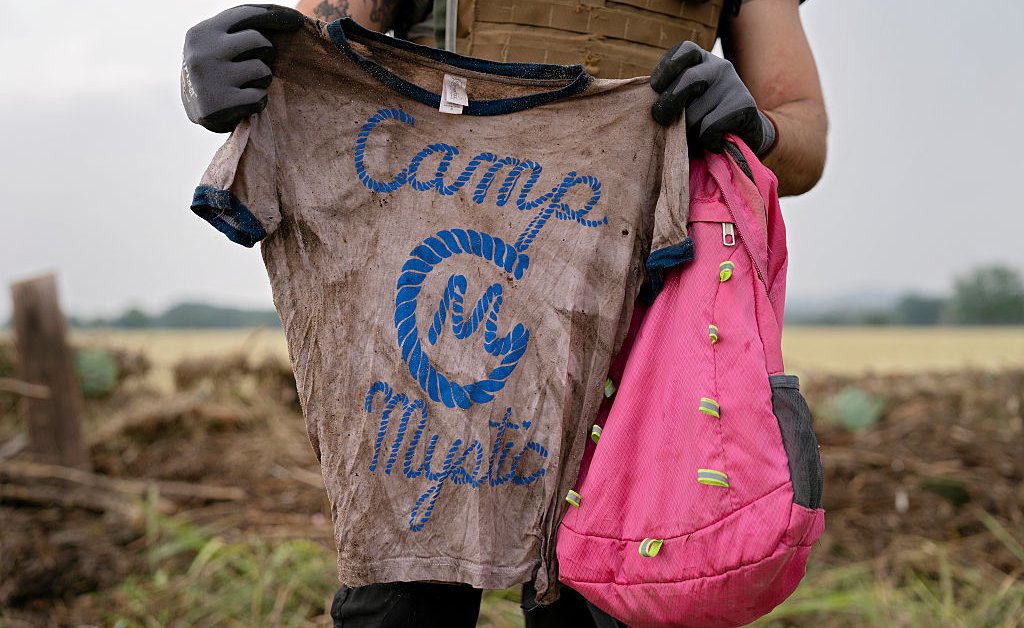When Lieutenant Blair Oguiofor responded to a call for an emergency deployment before sunrise on the Fourth of July, she did not anticipate the devastation ahead of her.
Oguiofor, a member of the U.S. Coast Guard and Texas native, was one of more than 1,700 emergency responders who headed to central Texas in response to heavy precipitation that caused fast-moving flood waters to rise up to 30-feet high, sweeping away cars and homes and taking the lives of at least 120 people. More than 150 individuals still remain missing statewide as search and rescue efforts continue. The natural disaster has caused an estimated $18 to $22 billion in damages, according to AccuWeather.
“With how these work, a lot of times we don’t have all the information when we first depart from our home base,” Oguiofor said. “We all thought, ‘Okay, they’re probably just Fourth of July campers, along the river, maybe 10-20 people [need assistance].”
The mission proved to be much more arduous than expected for her and her small crew of four, all of whom are first tour aviators.
The team—which typically deals with maritime assistance, she says—traveled inland to the all-girls Christian summer camp, Camp Mystic, which was nestled along the banks of the flooded Guadalupe River in an area known as “flash flood alley.” Camp Mystic was devastated by the flooding: At least 27 campers and counselors died, including the camp’s director Richard “Dick” Eastland.
Oguiofor and her team conducted dozens of flights, picking up groups of three to four girls from Camp Mystic and transporting them to a nearby reunification center after they were triaged by Petty Officer Scott Ruskan, the Coast Guard rescue swimmer who helped some 165 people to safety while also attempting to quell the high emotions of the girls at the campsite.
“They would come up as we’re trying to get them into the aircraft … Like, ‘Hey, have you seen my sister? She was over there at this other camp,’ or just trying to give descriptions,” Oguiofor recalls. “It’s one thing to go through that, but then also having to be a sibling, either older or younger, and now also questioning [my sibling’s safety]. These are kids.”
Oguifor attempted to put her emotions aside to complete her mission, though she admits she often worked with tears in her eyes throughout the nearly 12-hour day. “I [am] continually praying for them, continually praying for those families. My team and I were grateful for the part that we were able to play,” she says.
Oguiofor’s biggest hurdle as a helicopter co-pilot was actually getting to the camp, which lies near Kerrville, Texas, from her home base of Corpus Christi. The torrential downpour remained heavy when she embarked on the flight, forcing her and her crew to move across Texas through the towns of San Antonio, Boerne Stage, and Hondo as they flew west around the storm cell and constantly reassessed how they would make it on camp grounds. “It took us about four attempts before we’re actually able to get in,” she recounts. Eventually, they landed at a soccer field on the site.
The team relied on communication shared with them by the Army National Guard, who have also assisted with rescue efforts, as they took on the tasks assigned to them. “We’re still being introduced to different cases and different missions as we go,” says Oguiofor, who had only participated in a small number of missions previously. “Neither of us had anything like this case [before].”
Even amid the devastation, her work reminded her of people’s ability to come together as a community to assist in times of need. “I’m so impressed with everyone,” she says. “The bravery from people out there, that also warmed my heart.”
Read the full article here


